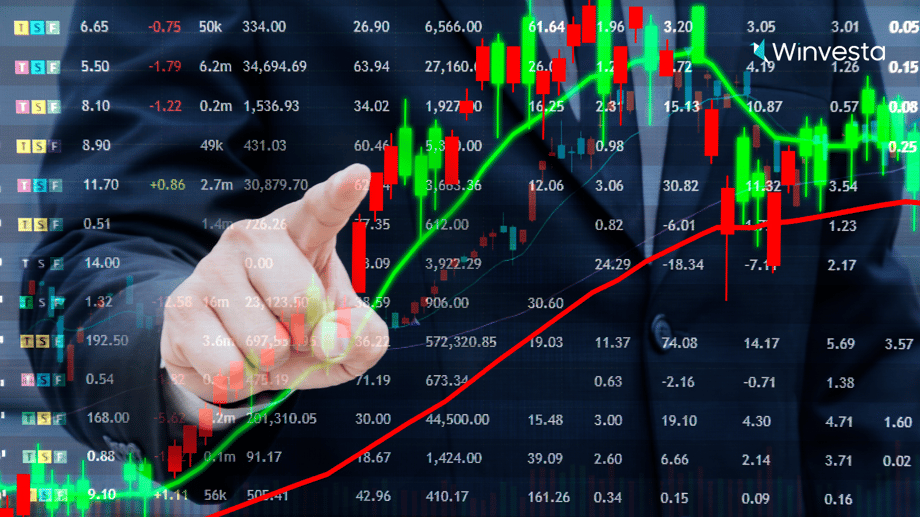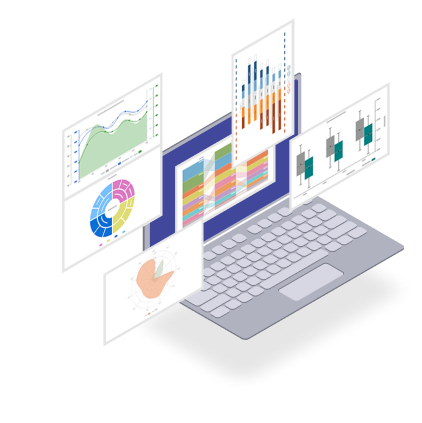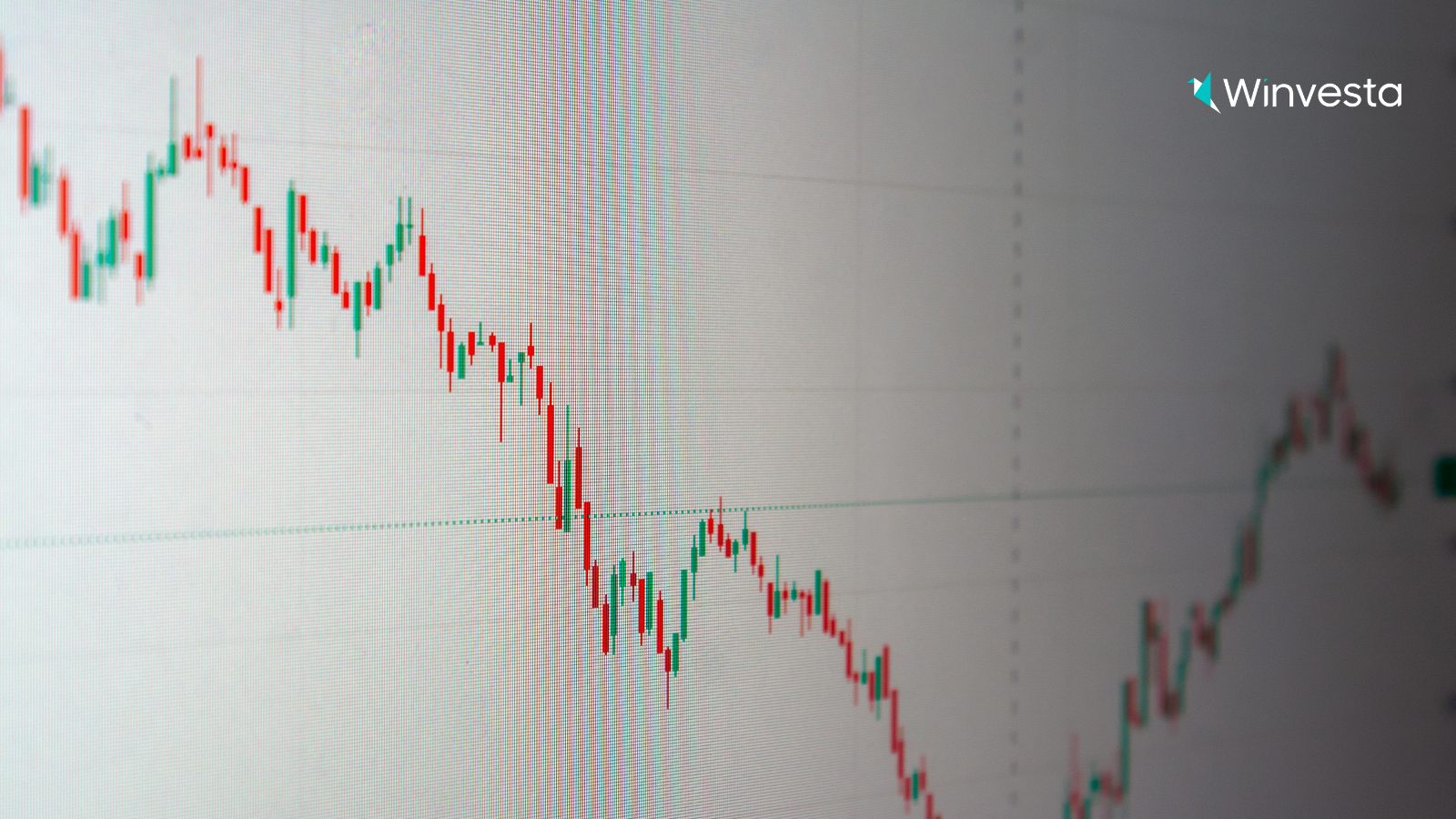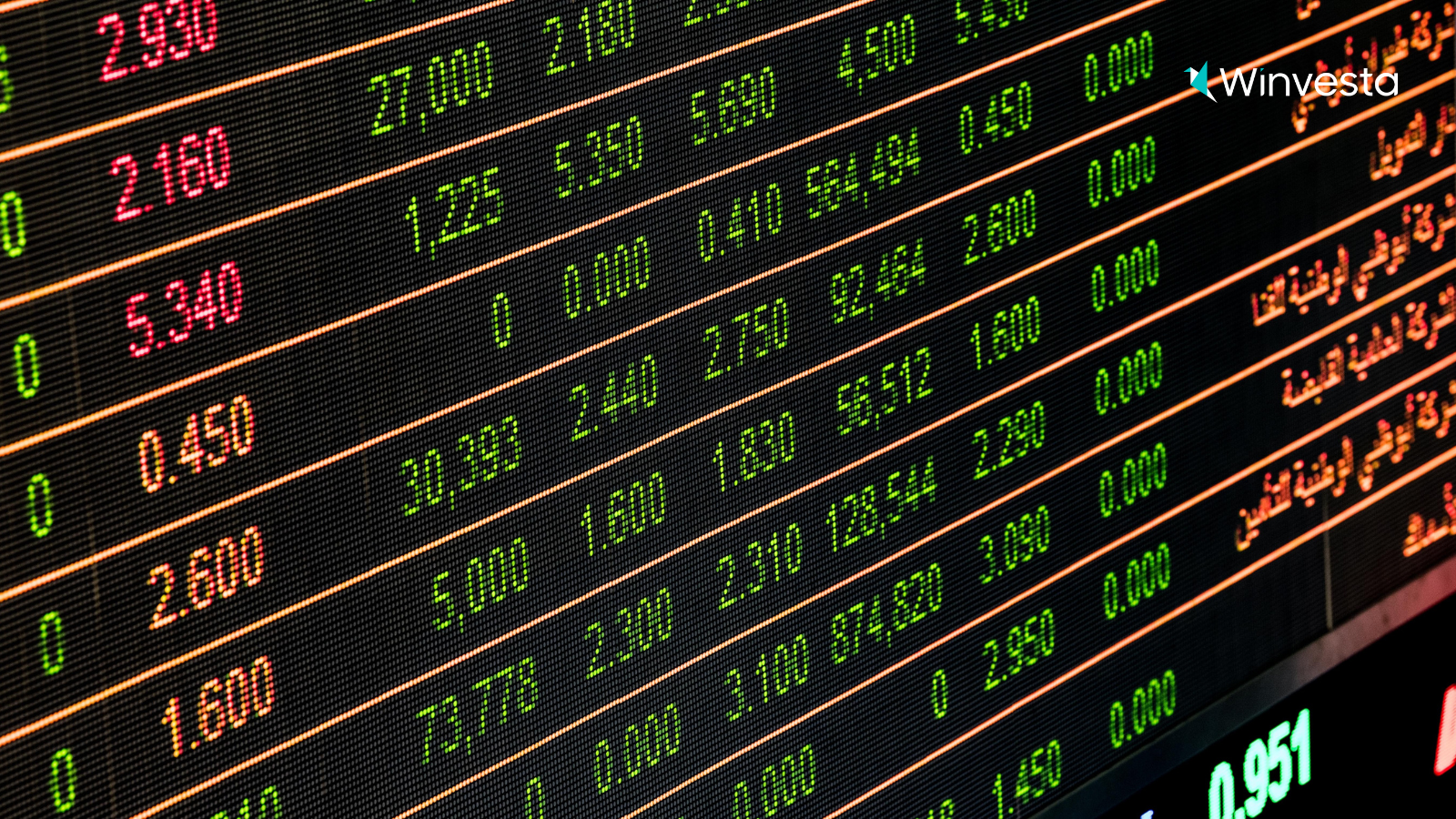Contents
Best US ETFs for Indian investors in June 2025 | How to invest easily
8 minutes read
23 June 2025

Want to grow your money beyond Indian borders? You're not alone. Thousands of Indian investors are exploring the US markets every month. The numbers speak for themselves - people search "investing in US stocks from India" nearly 3,000 times monthly.
However, what stops most people is that picking individual stocks feels overwhelming. You need time, experience, and constant market tracking. What if there's a more straightforward way?
Enter ETFs - your gateway to investing in US index funds from India without the headache of stock picking.
Top performing US ETFs to watch in June 2025
Here are some of the most searched and tracked ETFs for June 2025 by Indian investors:
| ETF Name | Full Name | Focus Area | Annual Fee | 1-Year Performance | Top Holdings | Ideal For |
|---|---|---|---|---|---|---|
| VOO | Vanguard S&P 500 ETF | Broad Market | 0.03% | ~27% | Apple, Microsoft, Amazon, Nvidia | Low-cost, broad market exposure |
| QQQ | Invesco Nasdaq 100 ETF | Technology | 0.20% | ~42.4% | Apple, Microsoft, Google, Tesla | High-growth tech exposure |
| XLF | Financial Select Sector SPDR Fund | Finance | 0.10% | ~21% | JPMorgan Chase, Bank of America, Wells Fargo | Banking & finance exposure |
| XLV | Health Care Select Sector SPDR Fund | Healthcare | 0.12% | ~18% | UnitedHealth Group, Johnson & Johnson, Merck | Stable, defensive investing |
| IEMG | iShares Core MSCI Emerging Markets ETF | Emerging Markets | 0.09% | ~25.5% | Tencent, Samsung, Infosys, Alibaba | Global diversification |
What exactly is an ETF?
Think of an ETF like a fruit basket. Instead of buying one apple, you get a basket with apples, oranges, and grapes. Similarly, instead of buying one company's stock, you buy a fund that holds hundreds of companies.
ETF stands for Exchange Traded Fund. These funds hold different investments:
- Stocks from multiple companies
- Government and corporate bonds
- Commodities like gold or oil
- Real estate investments
Most ETFs track specific indexes. For example, one ETF might hold all 500 companies in the S&P 500 index. Another might focus only on technology companies.
Best performing ETFs in June 2025 for indian investors
The standout performers this year include QQQ, with 42.4% returns, driven by the AI boom and the tech sector's recovery. VOO continues to be the most reliable choice with steady 27% gains, while emerging market ETFs like IEMG are showing strong momentum at 25.5%. Healthcare ETFs offer stability during market volatility, making them an ideal choice for risk-averse investors.
Why ETFs make investing in US index funds easier
You can trade them anytime
ETFs work like regular stocks. You can buy or sell them whenever the US market opens. No waiting until day-end like some mutual funds.
Prices change throughout the day based on supply and demand. This gives you control over your entry and exit timing.
Low fees eat into your returns less
Every investment fund charges fees. This "expense ratio" covers their operational costs.
Here's a simple example: If an ETF charges 0.20%, you pay ₹200 for every ₹1 lakh invested yearly. Many ETFs charge even less.
ETFs typically cost less than mutual funds because they don't need expensive fund managers. They automatically follow an index.
Instant diversification protects your money
One ETF can hold hundreds or thousands of companies. This spreads your risk automatically. If one company performs poorly, others can offset its impact.
Without ETFs, you'd need crores to buy stocks from hundreds of companies individually. ETFs enable you to achieve this diversification with significantly less capital.
Endless investment choices
ETFs exist for almost every investment theme:
- Different countries (the US, Europe, and Asia)
- Specific sectors (technology, healthcare, finance)
- Investment themes (clean energy, artificial intelligence)
- Company sizes (large-cap, mid-cap, small-cap)
What is a diversified portfolio of 5 vanguard ETF funds?
A balanced Vanguard portfolio typically includes VTI (Total Stock Market), VXUS (International Stocks), BND (Total Bond Market), VNQ (Real Estate), and VGT (Technology). This combination provides exposure to US stocks, international markets, bonds for stability, real estate for inflation protection, and tech growth potential. The allocation might be 40% VTI, 20% VXUS, 20% BND, 10% VNQ, and 10% VGT for moderate risk tolerance.
Watch out for these downsides
%20(12).png?width=1600&height=900&name=Blog%20images%20(2)%20(12).png)
Fees still matter over time
Even low ETF fees compound over the years. Some specialised ETFs charge 1% or more annually. This may seem insignificant, but it has a significant impact on long-term returns.
Always check expense ratios before investing. Small differences add up to lakhs over the course of decades.
Limited control over holdings
You can't choose which companies your ETF holds. Don't like a particular stock in the fund? You can't remove it.
For complete control, you'd need to buy individual stocks instead.
The three major US indexes you should know
S&P 500: America's top 500 companies
This index comprises approximately the 500 largest U.S. companies by market value. It represents over 80% of the total US stock market value.
Think Apple, Microsoft, Amazon, Google - all the big names sit here. The index leans heavily toward technology stocks, followed by finance, healthcare, and consumer companies.
NASDAQ: Technology powerhouse
NASDAQ includes over 2,500 companies, mostly technology-focused. However, most investors prefer the NASDAQ 100, which tracks only the 100 largest non-financial companies.
This index comprises the world's largest tech giants, as well as prominent companies in retail, industrial, and healthcare sectors.
Dow jones: The classic 30
The Dow Jones Industrial Average includes just 30 companies, but they're America's most established businesses. People refer to these as "blue chip" stocks due to their stability and reputation.
Best ETFs for investing in US index funds from india
S&P 500 ETFs: Your gateway to America's biggest companies
SPDR S&P 500 ETF (SPY) is one of the first ETFs ever created. It holds S&P 500 stocks in exact proportions as the index.
- Assets under management: $385 billion
- Annual fee: 0.09%
- What you pay: ₹900 per ₹10 lakh invested yearly
Vanguard S&P 500 ETF (VOO) Vanguard built its reputation on low-cost investing. This ETF performs similarly to SPY but charges significantly less.
- Assets under management: $754 billion
- Annual fee: 0.03%
- What you pay: ₹300 per ₹10 lakh invested yearly
VOO's lower fees make it extremely popular with long-term investors.
iShares Core S&P 500 ETF (IVV). Started in 2000, IVV also charges an annual fee of just 0.03%. It works almost identically to VOO.
- Assets under management: $296 billion
- Annual fee: 0.03%
- Performance: Nearly identical to VOO
Choosing between VOO and IVV often comes down to personal preference.
NASDAQ ETFs: Technology-focused investing
Invesco QQQ Trust (QQQ) is the primary way to invest in NASDAQ 100 companies. Born during the dot-com boom of 1999.
- Assets under management: $185 billion
- Annual fee: 0.20%
- Dividend yield: 0.47%
- Recent performance: 42.4% gain over 12 months
QQQ heavily concentrates on technology. Apple, Microsoft, Google, and Tesla dominate its holdings.
Dow jones ETFs: Blue chip investing
The SPDR Dow Jones Industrial Average ETF (DIA) has tracked the famous 30-company Dow Jones Industrial Average index since 1998.
- Assets under management: $30+ billion
- Annual fee: 0.16%
- Dividend yield: 1.58%
- Recent performance: 30% gain over 12 months
DIA focuses on financial services, healthcare, technology, and industrial companies.
iShares Dow Jones US ETF (IYY) Instead of just 30 companies, IYY covers roughly 95% of all US stocks.
- Assets under management: $1+ billion
- Annual fee: 0.20%
- Recent performance: 35.15% gain over 12 months
Much broader diversification than DIA.
ProShares Ultra Dow30 ETF (DDM) This leveraged ETF attempts to double the Dow's daily performance. High risk, high reward.
- Assets under management: $500 million
- Annual fee: 0.95% (much higher than others)
- Recent performance: 68% gain over 12 months
- Dividend yield: Just 0.10%
Warning: Leveraged ETFs amplify both gains and losses. If the Dow drops 2%, DDM typically drops four percentage points.
Is there an ETF that mirrors the USD exactly?
Yes, currency ETFs, such as UUP (Invesco DB US Dollar Index Bullish Fund), track the US Dollar Index against major currencies. However, these don't provide stock market exposure - they only track currency movements. For Indian investors seeking USD exposure with growth potential, broad market ETFs like VOO or VTI are better choices, as they offer both currency diversification and equity returns.
Top defence ETFs to consider in 2025
The leading defence ETFs include ITA (iShares US Aerospace & Defence ETF) and PPA (Invesco Aerospace & Defence ETF), both of which benefit from increased global defence spending. These ETFs hold companies like Lockheed Martin, Boeing, and Raytheon. Defence ETFs typically offer stability during periods of geopolitical tension and have demonstrated consistent performance, with dividend yields ranging from 1% to 2%.
Best ETFs for beginners in 2025
New investors should start with VOO or VTI for broad US market exposure, as they offer instant diversification with ultra-low fees of 0.03%. Add VXUS for international exposure and BND for bond allocation to create a simple three-fund portfolio. This combination provides global diversification, low costs, and requires minimal maintenance, making it perfect for beginners learning to invest systematically.
Your step-by-step guide to start investing
Step 1: Choose your investment focus
Decide what exposure you want:
- Broad US market exposure: Pick S&P 500 ETFs (VOO or IVV recommended)
- Technology-heavy portfolio: Choose QQQ for NASDAQ exposure
- Conservative blue chips: Select DIA for Dow Jones companies
Step 2: Compare costs ruthlessly
Even small fee differences compound over decades. A 0.06% difference between two similar ETFs can cost you lakhs over 20-30 years.
Calculate this way: (Fee percentage) × (Investment amount) = Annual cost
Step 3: Match your timeline
- Long-term investors (10+ years): Focus on low-cost, broad market ETFs like VOO or IVV
- Growth seekers: Consider QQQ for technology exposure (higher volatility expected)
- Income seekers: DIA offers higher dividend yields
Step 4: Start small and build
You don't need lakhs to begin. Many international brokers allow ETF purchases with minimal amounts.
Start with ₹10,000-50,000 and add monthly. This rupee-cost averaging smooths out market volatility.

Ready to own a piece of the world’s biggest brands?
- Invest in 4,000+ US stocks & ETFs
- Fractional investing
- Zero account opening fees
- Secure and seamless
Start investing in just 2 minutes!

Build your global portfolio.
.png)
Invest in companies you love, like Apple and Tesla.

Track, manage, and grow your investments.
Advanced ETF strategies for experienced investors
Once comfortable with basic US index investing, explore specialised options:
Sector-specific ETFs Target specific industries like healthcare (XLV), technology (XLK), or finance (XLF).
Thematic investing: Jump on trends through ETFs, focusing on:
- Artificial intelligence and robotics
- Clean energy and electric vehicles
- Cybersecurity and cloud computing
- Biotechnology and genomics
Geographic diversification: Add international exposure through:
- Developed markets (Europe, Japan)
- Emerging markets (China, India, Brazil)
- Specific countries or regions
Practical tips for indian investors
Currency considerations
Remember you're investing in US dollars. Rupee-dollar exchange rates affect your returns. A strengthening rupee reduces your gains when converting back to Indian currency.
Tax implications
Understand taxation on international investments. Consult a tax advisor familiar with overseas investing rules.
Platform selection
Choose reliable brokers offering US market access. Compare their:
- Account opening requirements
- Trading fees and commissions
- Currency conversion charges
- Customer support quality
Regular monitoring
While ETFs require less attention than individual stocks, it is still recommended to review your portfolio quarterly. Rebalance if needed to maintain your target allocation.
Ready to own a piece of the world's biggest brands?
Investing in US stocks from India through ETFs transforms a complex process into something manageable. You get professional diversification, low costs, and exposure to the world's largest companies without picking individual stocks.
Start with broad market ETFs, such as VOO, for exposure to the S&P 500. As you gain experience and confidence, consider exploring sector-specific or thematic ETFs that match your interests.
The key? Start early, keep costs low, and stay invested through market fluctuations. ETFs make this approach accessible to every Indian investor ready to think globally.
Frequently asked questions about investing in U.S. stocks through ETFs?


Contributed by Denila Lobo
Denila is a content writer at Winvesta. She crafts clear, concise content on international payments, helping freelancers and businesses easily navigate global financial solutions.



